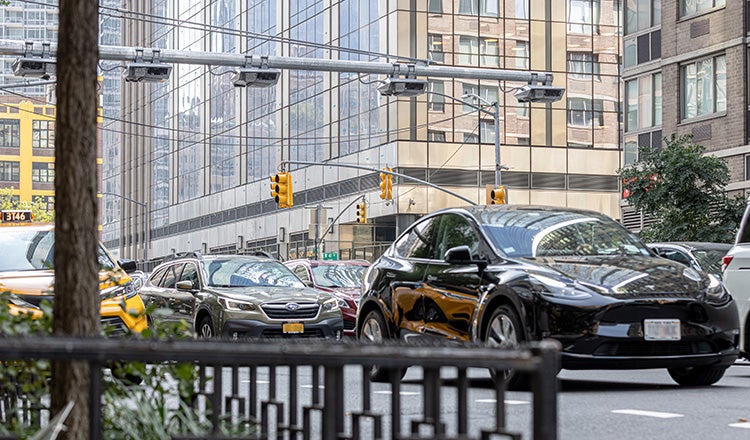New York City Central Business District Tolling Program

New York City Central Business District Tolling Program
Program Management Services Support First Congestion Pricing Program in North America
Drivers entering Manhattan’s Central Business District have long dealt with traffic that moves at a crawl. New York City is repeatedly ranked as the most congested city in the U.S., from sources including the Texas A&M Transportation Institute Urban Mobility Report, the INRIX Global Traffic Scorecard, and TomTom’s Traffic Index. All three sources estimate that the average driver loses more than 90 hours per year to congestion, as average travel speeds in Manhattan have dropped to just 7 mph.
The Metropolitan Transportation Authority is addressing this problem through charging drivers a fee to enter the most congested areas of Manhattan, disincentivizing the use of private vehicles and encouraging the use of transit and other mobility options. The cordon-based system seeks to reduce congestion, improve mobility, improve air quality and raise $15 billion for the region’s transit systems. HDR has been involved since the initiative began in spring of 2019, providing program management services, developing the conceptual designs, supporting system procurement and implementation, and overseeing design quality and construction.
The system began operation on January 5, 2025, and assesses tolls for vehicles driving into what’s now being referred to as Manhattan’s Congestion Relief Zone — 60th Street and south, excluding the West Side Highway and FDR Drive. Both E-ZPass and license plate cameras are used to identify vehicles entering the area. Toll prices vary by time of day with higher rates during peak travel hours, and by vehicle type. The design has over 100 detection points, most of which are on urban streets where conventional overhead tolling gantries would be an eyesore. Instead, innovative methods of detection are being used to blend the infrastructure into the urban landscape. When possible, equipment was mounted to existing infrastructure, or on light poles that match those elsewhere in a neighborhood. Innovative side-fire tolling equipment was also used to reduce overhead structures.
The results have been impressive. According to data released by the MTA in September 2025, the number of vehicles entering the congestion relief zone dropped 12% in its first 8 months of operation, and every crossing of the East River and Hudson River has seen morning peak travel times reduced in 2025 compared with 2024. Crashes in the zone were down 14% while ridership increased on all transit modes.
“This program has been nothing short of transformational, making streets safer, reducing gridlock across the region, and unlocking generational upgrades to mass transit, benefitting millions," said New York Governor Kathy Hochul.
Tapping Global Tolling Expertise
The tolling plan is the first of its kind in North America. After legislation passed in early 2019 to authorize the tolling system, HDR supported MTA Bridges and Tunnels in developing initial policies for the program. To do this, our team engaged experts around the world to gather a deep understanding of lessons learned on congestion pricing in Europe and Asia, put boots on the ground to survey over 100 locations for toll equipment throughout NYC, and led the development of design and performance criteria for the tolling systems.

Delivering on Schedule
We led the development of the concept of operations, preliminary design, independent cost estimates, schedules, and procurement documents to on-board a contractor, who was selected to complete the final design, as well as build, operate and maintain the complex tolling system. The request for proposals was completed in three short months and a contractor was selected one month ahead of schedule – an exceptionally aggressive timeline.
To accomplish this as program manager, our team maintained the program schedule, built a team of local and international experts within HDR and partner firms, used innovative tools to maintain project records and reviews, and closely monitored budgets. HDR used a variety of tools to stay on track and facilitate communication between our partners and client. This included SharePoint, Quickbase and SmartSheets, among others to keep the information flowing, designs coordinated, and tasks advancing.
Technical System Design and Commissioning
After completing early concept design, HDR performed design quality oversight services of the system and infrastructure design by the selected contractor. This included review of infrastructure and system designs, extensive testing and commissioning of the tolling system, and construction management and inspection services. Our team also assisted in updating and redesigning the back office systems, including financial systems to handle the new cordon tolling transactions and methods.
Our team is proud to have supported MTA Bridges and Tunnels in the development of this ground-breaking program and to improve mobility in and around Manhattan. HDR continues to support the program as it enters the operations and maintenance phase.












